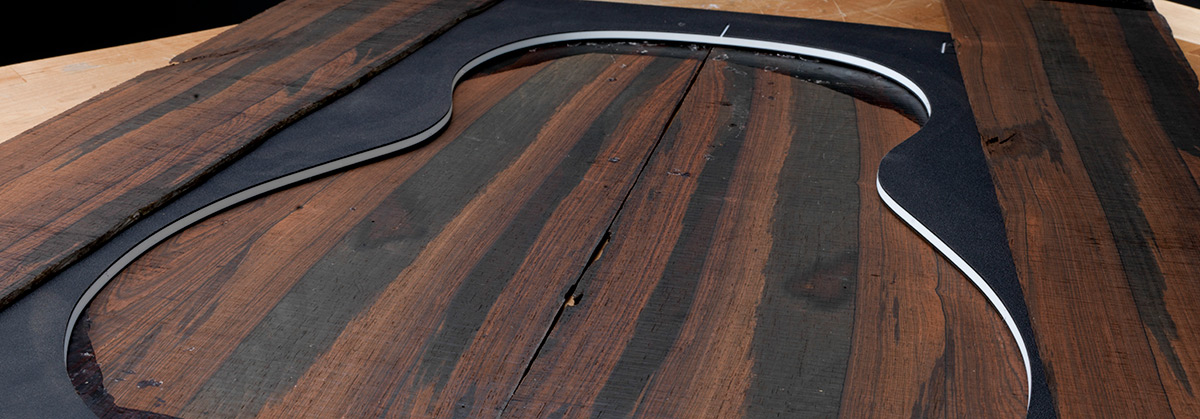
In January, we introduced you to James, our Wood Librarian. He shared some of his thoughts on Cocobolo and what it's like to working with the unique wood. You can read that story here.
This month, we are switching gears and talking to James about Brazilian rosewood.
Q: What do you love about Brazilian rosewood?
A: I love the way it looks! It comes in an array of browns, with an immense amount of character in the way the grain flows. The best part though is the sapwood. It's generally very blonde and spalted looking. Generally what you'll see when people refer to Puerta de Iglesia (Church door) Brazilian is lots of sapwood book matched, usually in the center. When used, well it adds so much beauty to any project!
Q: How is it working with Brazilian rosewood?
A: It's very dense, oily, and holds scratches and swirls while sanding through different grits. It may take a little extra elbow grease and care to get the desired result but its worth it!
Q: What is unique about Brazilian rosewood?
A: The way it oxidizes. Most woods get darker or lighter when they oxidize, depending on the situation. Brazilian on the other hand can turn green! And it's beautiful! The only downfall is that when you sand it, the green comes right off. Then it exposes the mystery of what lies underneath.
Q: Do you have a favorite model that we make?
A: My favorite Breedlove model was the Exotic Flatpicker. I really love the look of this guitar. It is very elegant with all its binding appointments. From the way the bloodwood binding, back strip and tailpiece flow seamlessly around the body or the flash of the abalone inlay on the Adirondack top perfectly compliment the Brazilian back and sides. It’s a beautiful guitar and true testament of what the Breedlove craftsmen are capable of!
Q: About Brazilian Rosewood as an Acoustic Guitar Tonewood:
Brazilian rosewood is highly desirable, exceptionally rare and heavily regulated. It is regarded as one of the finest tonewoods; hard, stiff, and highly resonant with a glass-like ring that sustains; it has a floral scent, similar to roses, thus the name. A very hard, heavy wood that produces a loud, warm, rich tone, with full deep bass, and brilliant trebles, known for its sustain and clarity. Can vary from brick red and burnt orange to shades of dark brown to violet color with black spidery streaks, it looks best when quarter sawn, and can exhibit straight grain and homogenous color or wild landscape-like figuration, often compared to spider webbing.
Brazilian rosewood is an endangered species and has been illegal to harvest since 1964. Instruments are still being made from Brazilian, due to a very limited supply of Brazilian that was harvested prior to the 1964 ban. However, legal instruments must have the appropriate CITES paperwork, proving that the harvested wood landed in Europe prior to the ban. If there is no paperwork, chances are the Brazilian was illegally sourced.
Brazilian rosewood is available to use in our Custom Sound Studio. It is also part of our Masterclass Brazilian and Journey series and Exotic Amazon Concerto E.
Visit your local Distinctive Dealer to check one out.
